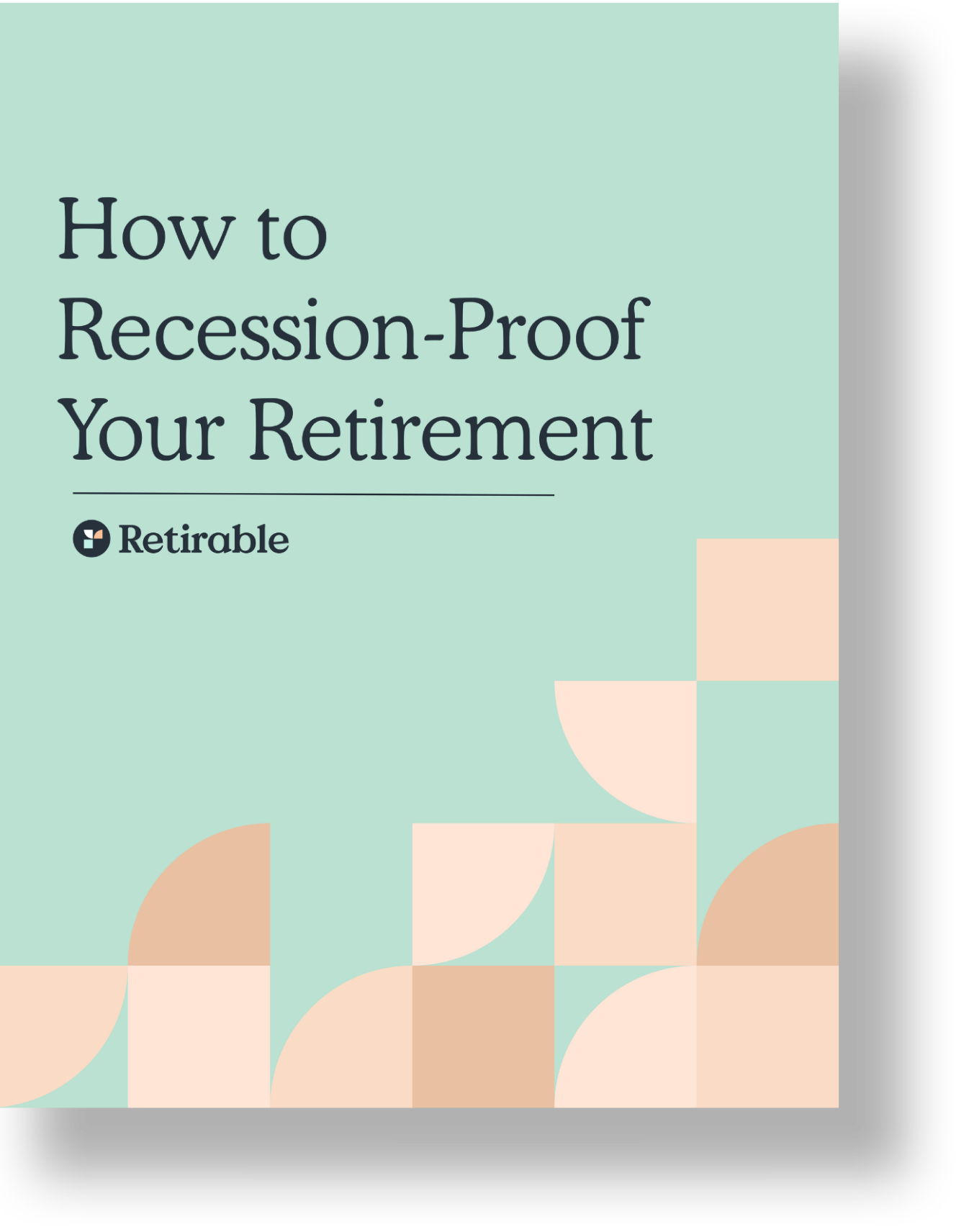Income
Is $200K enough to retire? While we wish we had a magic crystal ball that would reveal a definitive yes or no, the reality is there is no one-size-fits-all answer to this question. Ultimately, the choice to retire with a $200K nest egg will depend on numerous factors: your age, your lifestyle, your health, where you want to live, and more. While we can’t make the decision for you, we can share some factors and resources to consider so you can determine whether retiring on $200K is within reach.

C.E Larusso
•
Published April 18th, 2022
•
Updated February 4th, 2025
Table of Contents
Key Takeaways
If you have $200,000 in retirement savings, don’t turn in your retirement notice just yet.
Divided over one or two decades or more, $200,000 might not be enough to see you through.
By waiting to take Social Security later, wisely investing your funds, and reducing your cost of living, you might be able to make $200,000 a viable retirement savings.
Is $200K enough to retire? While we wish we had a magic crystal ball that would reveal a definitive yes or no, the reality is there is no one-size-fits-all answer to this question. Ultimately, the choice to retire with a $200K nest egg will depend on numerous factors: your age, your lifestyle, your health, where you want to live, and more. While we can’t make the decision for you, we can share some factors and resources to consider so you can determine whether retiring on $200K is within reach.
How Earnings and Inflation are Impacting Retirement for Many Americans
In June of 2022, inflation reached a staggering high of 9.1%—this is the highest jump seen since the 1980s. Since then, the rate has dropped, but it is still above the 2% average that indicates price stability. As of January 2025, the inflation rate sits at 3%, which means that Americans paychecks are not going as far as they used to for common consumer items. In short, it’s more expensive to pay for groceries, gas, and other necessities.
These are some of the categories hit hardest in January 2025, with percentages indicating year-over-year price changes:
- Eggs: 53%
- Motor vehicle insurance: 11.8%
- College textbooks: 10.7%
- Other condiments: 10.3%
- Uncooked beef roasts: 7.5%
- Instant coffee: 7.1%
- Bacon: 6%
- Gas service: 4.9%
Source: CNBC
Given the overall higher cost of goods, some are finding that they need to cut back on retirement savings. In addition, the New York Times reported in 2023 that there has been an increase in the number of hardship withdrawals taken out of 401(k) accounts. Ultimately, this has delayed retirement for many, with some people saying it's entirely out of reach.
Even if you haven’t needed to withdraw from your account or pause saving, it’s likely that inflation has had some effect on your retirement saving vehicles—different accounts weather inflation in different ways.
Social Security
While Social Security benefits are evaluated every year to be adjusted against the cost-of-living, these adjustments have historically been seen as inadequate. The Senior Citizens League reported that seniors lost one-third of their buying power between 2000 and 2021. The League also noted that the cost of goods and services increased by 99.3% between 2000 and 2020, while the Social Security COLA adjustments only rose by 53%.
Note, also, that by waiting until you are older to take your Social Security benefits, the more you will receive each month. When you take the earliest Social Security option, you dramatically reduce your monthly payout for the remainder of your life. Crunch the numbers to determine the difference between retiring at 60 with $1 million or waiting until you’re 65, 66, 67, or later.
Pensions
Pension plans are typically tied to several of your last years of salary rates. If a period of high inflation hits during the last few years of your working years, it’s possible that your final benefit amount may come in lower as the calculation was made on pre-inflation salary. If high inflation hits after you retire, your payouts will be based on the salary you earned previous to inflation. It’s also important to note that private pensions often do not adjust for inflation at all—only state or local government plans.
401(k) and IRA Accounts
Investments and dividends don’t adjust for inflation, so the money invested in your 401(k) or IRA can be negatively impacted during periods of high inflation. For example: if you’re getting a return of 10% on your 401(k), but inflation hits 8%, you’ll only see a 2% gain on your investment. If you’re getting a return below 8%, your net gain will be negative. The typical target for a 401(k) is a 5 to 8% return (IRAs are typically between 7 and 10%), so when inflation rises above this, your 401(k) could take a hit. That said, 401(k) accounts are still good investment vehicles as they see a higher interest rate than many other types of accounts.
Even though the inflation rate is out of your control, there are some actions you can take to mitigate the effects of it on your retirement savings.
- Diversify: You shouldn’t hold only stocks or only bonds—make sure there’s a nice diversification in your portfolio holdings. Be sure to discuss your specific investments with a Certified Financial Planner.
- Adjust your planned spending: It’s always smart to assume there will be some level of inflation, and if you’re worried about a high inflation period hitting while you’re in retirement, adjust your budget accordingly, and make calculations based on a higher inflation rate, such as 5%, rather than a lower one. Example: If you were planning to retire with $50,000 in annual retirement income, a 5% inflation rate would mean you’d need to give yourself a $2,500 raise starting in your second year of retirement.
- Pay off debts: Adjustable-rate mortgages and credit card debt should be paid off before you retire, to prevent the rates from jumping during high inflation periods.
- Hire a Certified Financial Planner: Preparing and saving for retirement is not easy, but it’s a lot easier with a professional who can help you strategize and consider all of your future goals. Talk to a Retirable financial planner to go over your finances and set up milestones to help you reach your retirement goals.
Is $200k Enough to Retire on in 2024?
Ideally, the rate of return on your investments is enough for you to live off of, so you never need to touch your principal.
With $200,000 in your retirement savings and factoring in the average annual rate of return between 10–12%, you’ll have between $20,000 and $24,000 to live off of each year. If, though, there’s a slow year and the returns are low—let’s say 8%—you’ll only have $16,000, or you’ll need to dig into your principal, which will lower your overall returns for future years.
It’s up to you to decide if this is enough money to live off of—and certainly, some people do, either by downsizing or moving somewhere much less expensive—but it’s also wise to consider some of the major costs you will likely see during retirement, such as:
- Housing: Housing prices continue to increase; if you don’t own your home and are renting, you should expect that you will be paying more for housing during retirement than you are now. In addition, keep in mind that your home maintenance costs will likely rise in retirement as you might not be as capable of doing certain tasks.
- Healthcare: The average 65-year-old couple today will spend around $12,000 on health care in their first year of retirement. It’s possible this number could be lower for you, if you are in great health, but it also could be much higher if you require the care of specialists or have any health issues that need to be addressed.
- Transportation: If you own a car, expect that gas prices will rise. If you don’t or are unable to drive, you’ll need to factor in alternate means of transportation, such as taxis or car-sharing services.
Protect yourself from scams and fraud.
Every Retirable client is protected with $1M in identity theft insurance.Factors to Consider When Figuring Out How Much You Need for Retirement
Many financial planners will suggest reviewing these core categories to determine how much you need to save for retirement—while life will always be full of unexpected costs, having a sense of how much you need to live comfortably can prepare you to budget and plan smartly as you head into retirement.
- Cost of living: Expect the cost-of-living to rise each year. Typically, inflation jumps between 1 and 2% each year, but since the COVID-19 pandemic, we have been in a period of high inflation that has exceeded that. This means that the cost of everyday goods, such as food, clothing, and movie tickets, will rise, and your dollar won��’t go as far to pay for these items. Make sure to calculate your future income needs based on a higher inflation rate.
- Taxes: It’s likely that you’ll pay lower taxes overall than you did when you were working—as you will be making less money—but each state has its own tax laws. Some, such as Colorado and Connecticut, tax social security. If you think you’ll be in a higher income bracket during retirement, consider opening a Roth IRA. These accounts require that you pay taxes upfront, but you will be able to t
- Keeping your current lifestyle: Do you want to live similar to the way you live now, or would you like retirement to be more luxurious, with more travel? Alternatively, would you consider downsizing? Many people choose to sell their home and live somewhere smaller during retirement, to save on costs, while others want to stay in their homes and in their neighborhood. In retirement, where you live won’t be tied to your career, so you’ll need to consider the best place to live and your overall lifestyle given your budget and savings.
- Your health: Health is a major consideration when deciding how much you need for retirement. If you are healthy, it’s possible you’ll live a long life, and will need ample income to sustain you for those extra years. If you have a medical condition, you might need to see specialists, and need to account for those costs and how much Medicare will cost you. Many retirees choose to purchase supplemental plans to get ample coverage, but that comes at a price
- Where you live: Tax considerations—both at the state and city level—will be a major consideration, as will the cost of housing and overall cost of living. You should also take into account if you live somewhere that requires you to drive most places, as transportation is another major cost factor.
- Your income: Beyond your Social Security, you should take a look at your various income sources. You might have rental income property, a hefty IRA, or other investment vehicles to pay for retirement. Some retirees enjoy work, so instead of retiring completely, they take on a part-time job to supplement their monthly pay. The other side of income is spending—make sure you do a deep dive on your spending and calculate where you can cut back during retirement.
How to Retire on $200K by Age
As you’re figuring how much your Social Security payout will be, it’s important to look at what $200,000 in retirement will look like, divided over a number of years. The below table looks at the average life expectancy of 77, but you could live much longer, which will reduce this even further.
| Age | Income per year (without interest) | Interest on yearly income (at 4 percent) | Income per year (with 4 percent interest) |
|---|---|---|---|
| Age 50 | $7,407 | $296 | $7,703 |
| Age 55 | $9,091 | $364 | $9,455 |
| Age 60 | $11,765 | $471 | $12,236 |
| Age 65 | $16,667 | $667 | $17,334 |
| Age 70 | $28,571 | $1,143 | $29,417 |
4% is a relatively conservative assumption for annual interest, but it’s possible that there will be even slower years—3% returns do happen. It’s important to be prepared for those scenarios and make sure you’ve budgeted and planned for a few of them as you head into retirement.
Frequently Asked Questions
Can You Live Off Monthly Interest on $200,000?
With an average return of 5%, you would have an income of $10,000 annually or $833 per month. Without some kind of supplemental income, this would not go very far in the US, where the average rental cost for a one-bedroom apartment is $1,700. That said, some retirees choose to move to less expensive places—usually in Central or South America—to live off of less and retire without an enormous nest egg. The decision is ultimately up to you and your personal goals and needs for retirement.
Can A Couple Retire On $200,000?
Having to stretch $200,000 between two people would be difficult. If you are both in excellent health, that means you may live longer, so the funds would need to stretch for more years. If you suffer from any kind of medical condition, you’ll need to factor in your healthcare costs. As we noted, there are some places in the world where you can live much more frugally than the United States, but that change in lifestyle is something you need to decide on and commit to with your partner.
Can I Retire at 50,55,60,65 with $200,000?
Deciding when to retire will require a close look at your current lifestyle, the lifestyle you wish to have during retirement, and your current expenses. The best way to determine whether or not what you have saved is enough is to talk to a Certified Financial Planner; they can review your investments and make suggestions for ways you might be able to cut down on spending, allowing you to retire at the age you wish to.
What Percentage of Retirees have $200k?
Around 50% to 55% of retirees have accumulated about $200,000 in their retirement savings. This segment represents a broad swath of the retired population, indicating that many have made some effort to save for their later years, likely through employer-sponsored plans and individual savings efforts. However, while $200,000 is a commendable sum, it might provide a modest lifestyle in retirement, necessitating careful financial management and possibly additional income sources such as Social Security benefits to ensure financial stability and cover all necessary living and medical expenses throughout retirement.
Final Thoughts
Whether you hope to retire with $200k, the answer to how and when to retire still depends on your individual circumstances. A Certified Financial Planner (CFP®) can take a look at your retirement savings and help you set a budget that will allow you to clearly see the best retirement age for you.
Share this advice

A professional content writer, C.E. Larusso has written about all things home, finance, family, and wellness for a variety of publications, including Angi, HomeLight, Noodle, and Mimi. She is based in Los Angeles.
Will I Have Enough?
Maintain Your Lifestyle
Share this advice

A professional content writer, C.E. Larusso has written about all things home, finance, family, and wellness for a variety of publications, including Angi, HomeLight, Noodle, and Mimi. She is based in Los Angeles.
Free Retirement Consultation
Still have questions about how to properly plan for retirement? Speak with a licensed fiduciary for free.






